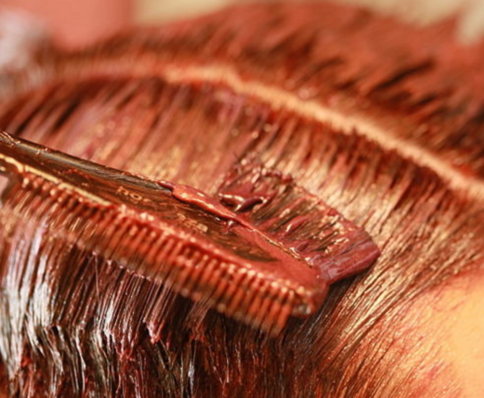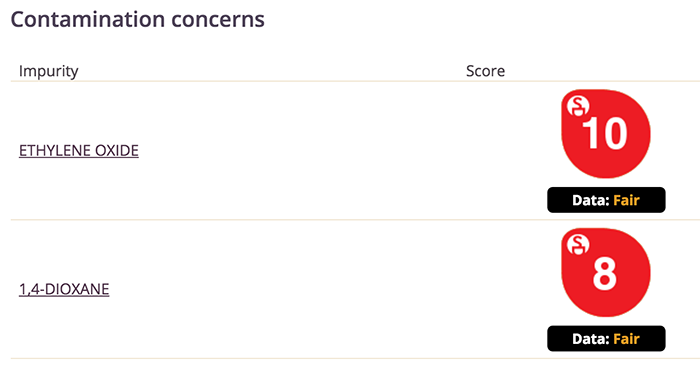When the topic of non-toxic hair color arises there are known aggressors, such as ammonia and lesser known ingredients, like PEGs. However, when you market yourself as an non-toxic, organic salon, knowing about ingredients in your hair color is vital to building trust with your clientele.
To understand why you should avoid PEGs in hair color, you must know what they are.
What are PEGs?
PEGs or polyethylene glycols are synthetic petrochemicals found in a range of cosmetics, care and hair color products. They’re commonly used as emollients (softeners) and emulsifiers (aids in the mixing of oil and water-based products).
So, what’s the big deal?
Why are so many non-toxic beauty products starting to tout themselves as “PEG-Free?”
According to scientific research, there are 2 big reasons to avoid PEGs in hair color:
- Enhanced Penetration Effects
- Carcinogenic Contamination Concerns
Enhanced Penetration Effects
As Hair Stylists, we know the act of coloring hair is a chemical process. There are necessary ingredients that can cause allergies, but are needed to predictably color hair and cover greys.
That being said, penetration enhancers (like PEGs) used in high percentages, make it easier for other ingredients to get deep down in the skin. And since many colorists opt to put their clients under heat, this only amplifies the penetration process.
Not all PEGs are created equal.
Most PEGs are followed by a number, such as PEG-100. This number represents the molecular size.
The lower the number, the smaller the molecular size of the PEG. When these molecules are small, the greater ability it has to deliver undesirable ingredients into the skin and scalp.
High penetration effects have been found in PEG-2 and PEG-4.
Another factor that should be noted is the percentage level of PEGs in hair color.
Ideally, your hair color would be PEG-free or only have a small percentage (with a low molecular size). So, take a look at the back of your color bottle or tube. Is a PEG one of the very first ingredients? If so, there’s a high percentage of PEGs in your hair color.

The smaller the molecular size of the PEG, the greater ability it has to deliver unwanted ingredients into the skin and scalp.
Carcinogenic Contamination Concerns

According to a report by the International Journal of Toxicology by the Cosmetic Ingredient Review, carcinogenic (cancer-causing) ingredients were found in various PEG compounds.
One alarming impurity found in PEGs is the highly toxic, ethylene oxide. Even in small amounts, this ingredient is extremely harmful (it was used as nerve gas in World War I).
Ethylene oxide is also recognized by the International Agency for Research on Cancer (IRAC) as a known human carcinogen.
These contamination concerns are mimicked in the widely-known ingredient database, Skin Deep (seen in photo above).
Another ingredient found in PEGs is 1,4 dioxane; it also has many studies linking it to cancer in humans. It’s banned for use in cosmetics in numerous countries, such as Canada.
In 2008, the Organic Consumer Association conducted a study on personal care products labeled as “natural” or “organic.” They found 1,4 dioxane in 46% of products analyzed.¹
The chemical is an unwanted by-product of an ingredient processing method called ethoxylation. This process is used to reduce the risk of skin irritation of petroleum-based ingredients.
Though 1,4-dioxane can easily be removed from products before they are sold, its widespread presence in products indicates that many manufacturers fail to take this simple step.
And since the professional beauty industry is even less regulated than consumer cosmetics, these toxins may be lurking in hair color without your knowledge.
Summary
- Carcinogenic ingredients (ethylene oxide and 1,4 dioxane) have been found in PEGs.
- In 2008, more than 46% of products labeled “organic” or “natural” contained trace amount of cancer-causing ingredients, ethylene oxide and 1,4 dioxane.
- PEGs are concerning in hair color due to their enhanced penetration effect. The application of heat poses even greater penetration concerns.
- The lower PEG’s molecular weight, the greater the skin permeability. Example: PEG-2
Sources
¹ OCA (Organic Consumer Association). 2008. Consumer alert. Cancer-causing 1,4-dioxane found in personal care products misleadingly branded as natural and organic. Available: http://www.organicconsumers.org/bodycare/DioxaneRelease08.cfm




